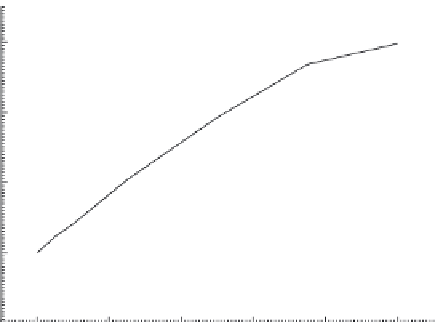Biomedical Engineering Reference
In-Depth Information
0.015
0.010
0.005
0.000
-0.005
0
20
40
60
80
100
t
(day)
FIGURE 5.24
Effect of electromagnetic field on surface bone remodeling.
described. Figure 5.24 lists the corresponding variation of inner radius with
time
t.
It can be seen from Figures 5.23 and 5.24 that an electromagnetic
field also has a significant effect on the bone remodeling process. When
the applied electric potential is relatively small—say, φ = 0 or 5 V—both the
bone porosity and inner radius can increase quickly with the time
t,
whereas
the bone porosity remains nearly constant when the applied electric potential
increases to φ = 10 V and above. The variation of inner radius has a similar
trend to that of bone porosity.
References
1. Hazelwood S. J., Martin R. B., Rashid M. M., Rodrigo J. J. A mechanistic model
for internal bone remodeling exhibits different dynamic responses in disuse and
overload.
Journal of Biomechanics
34 (3): 299-308 (2001).
2. Qu C. Y., Qin Q. H., Kang Y. L. A hypothetical mechanism of bone remodel-
ing and modeling under electromagnetic loads.
Biomaterials
27 (21): 4050-4057
(2006).
3. He X. Q., Qu C. Y., Qin Q. H. A theoretical model for surface bone remodeling
under electromagnetic loads.
Archive of Applied Mechanics
78 (3): 163-175 (2008).
4. Frost H. M. Changing concepts in skeletal physiology: Wolff's law, the
Mechanostat, and the “Utah paradigm.”
American Journal of Human Biology
10 (5): 599-605 (1998).
5. Wolff J.
Das gesetz der transformation der knochen.
Berlin: A. Hirschwald (1892).
6. Cowin S. C. Adaptive elasticity.
Bulletin of the Australian Mathematical Society
26 (1): 57-80 (1982).

























